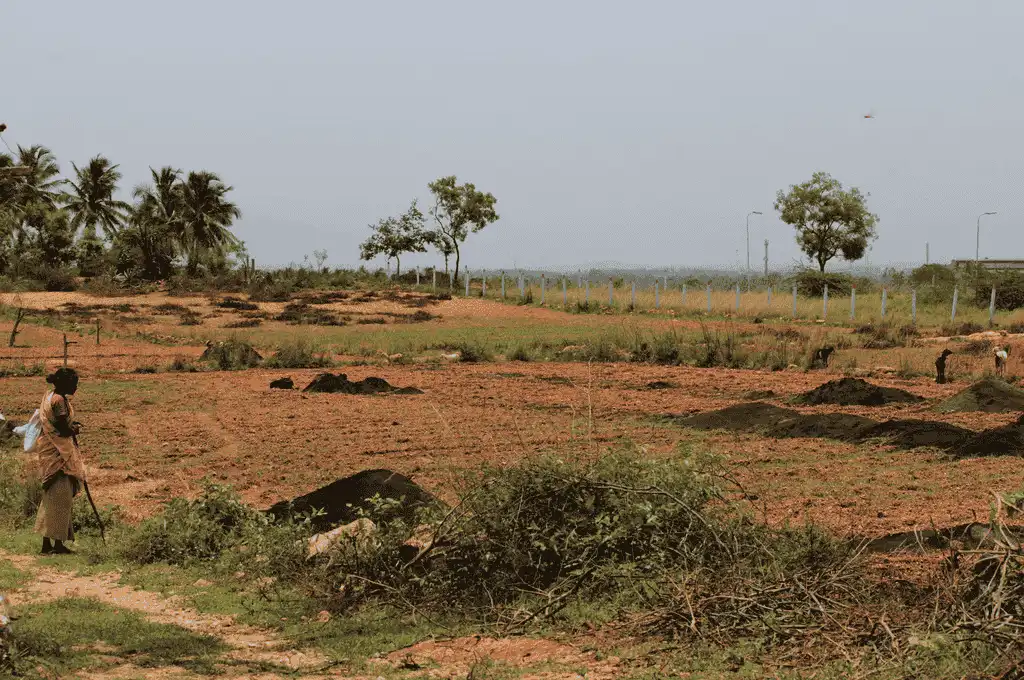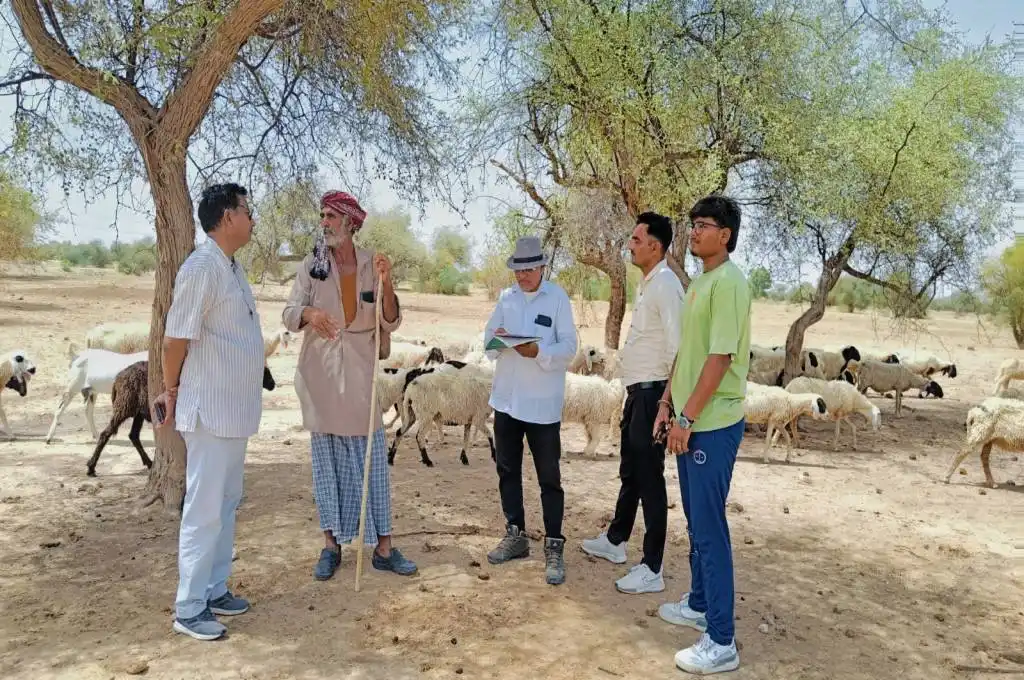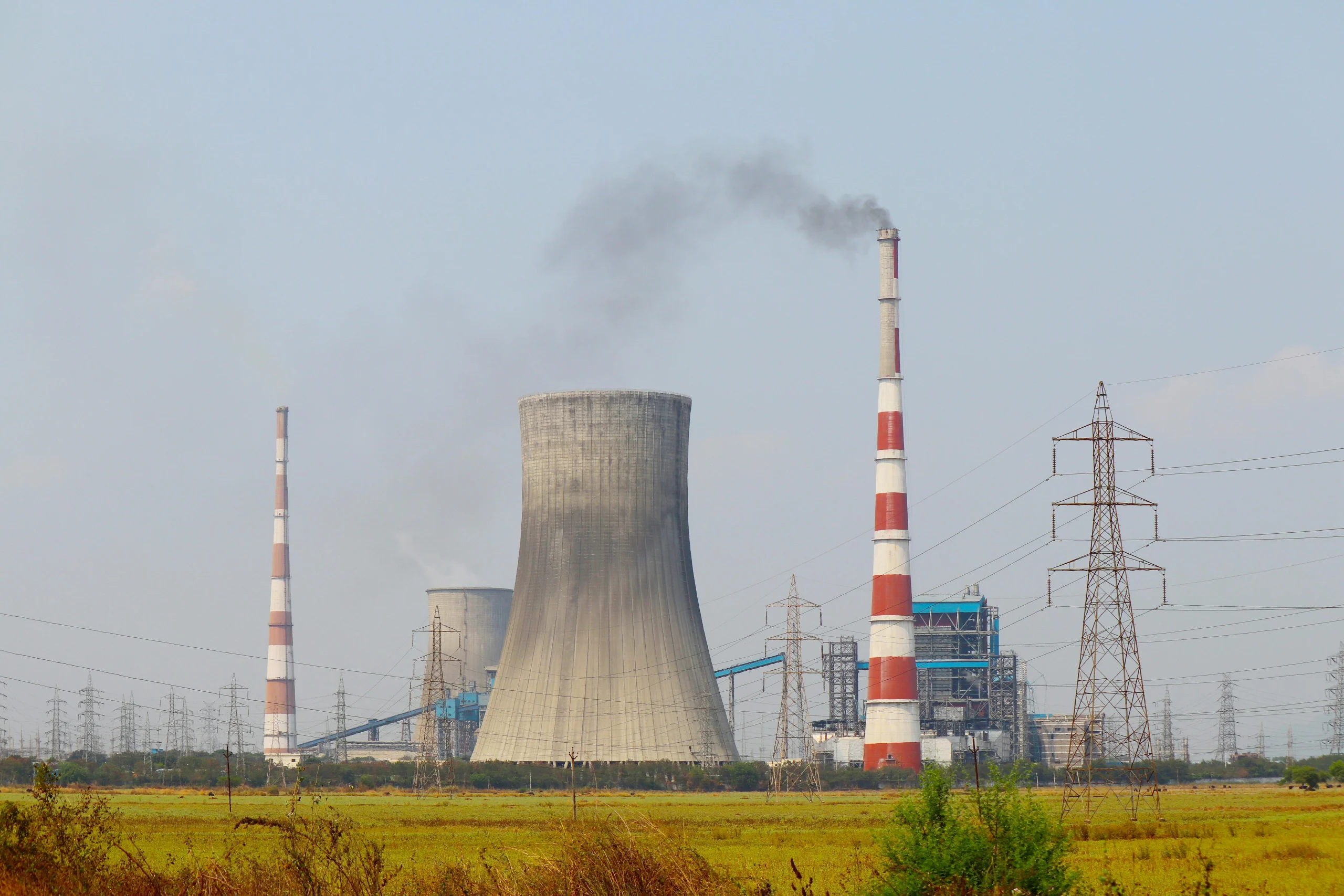What is the value of nature—is it measured in the price of the land on which a grove grows, in the species of flora and fauna that a coastal reef can sustain, or in the amount of carbon a forest can absorb? Should nature be understood solely as a resource whose value can be extracted and translated into economic terms? In the context of a rapid decline of natural frontiers, what can an economic valuation of commons mean for ecosystems, as well as for people’s rights to the resources on which they are collectively dependent?
One-fifth of India’s land mass is constituted of land commons. Varying estimates place their expanse between 66.5 and 83 million hectares of forests, permanent pastures, culturable wastelands, and barren lands. Beyond directly supporting the livelihoods of hundreds of millions of people, commons are also repositories of sociocultural traditions. They perform vital ecosystem functions by sustaining local ecologies and diverse life forms, including through water conservation and regulation.
However, commons have long been vulnerable to policy interventions and pressures, including the era of land reforms between the 1950s and ‘80s. While the reforms were geared towards providing land to vulnerable landless communities, these policies failed to acquire and redistribute private land. Instead, it was largely common property resources that were divided and turned into individual landholdings.

In the time since, concerns have grown around the degradation of commons, with an estimated loss of anywhere between 1 to 32 percent across various districts in India. Factors contributing to this decline include depletion due to economic activities, poor governance, and weak community rights.
In 2020, an analysis of more than 700 land conflicts in India found that 68 percent of these cases were related to common lands. They impacted 79 percent of all people affected by land conflicts in the country. Infrastructure projects were the leading cause of conflicts, with mining projects being the second biggest driver of distress.
This fragmentation, overuse, and decline of commons has raised important questions about how to conserve them. The answers have ranged from top-down conservation models that seek to sever all human contact with natural resources, displacing entire villages in the process, to community-led initiatives for the recovery and protection of commons.
One key approach that has emerged over the past five to six decades has been the ecosystem services approach, which aims to bring in the entire range of nature’s benefits, both material and non-material, into economic decision-making. By the 1990s, the ecosystem services approach made its way into global policy thinking, eventually informing the UN Convention on Biological Diversity.
An economic case for ecological conservation
The myriad direct and indirect benefits and services that natural resources provide to human beings are understood as ecosystem services, and they are classified in different ways. This includes:

a) Provisioning: Tangible products such as food, firewood, and other non-timber forest products (NTFP).
b) Regulating: Air and water purification, soil fertility, and climate.
c) Supporting: Soil formation and habitat for animals and insects.
d) Cultural: Sacred rituals and social and religious customs.
The use of ecosystem services, or an economic approach to conserving nature, was reflective of ‘market environmentalism’, which emerged in the 1980s. The basic pillars of this approach included establishing clear property rights and titles over resources, valuation of ecosystem services, and use of market-based instruments—including taxes, subsidies, or tradable permits in the case of carbon sequestration—as incentives for conservation.
Climate solutions often lead to the appropriation of commons in the name of carbon offsets or large-scale afforestation.
However, commons, which are collaboratively managed and collectively owned, posed a challenge for this kind of thinking. Dr Sisir Pradhan, a professor in the faculty of environment at the University of Waterloo, says, “In the midst of all this, the commons fell through the cracks. These were communal resources that were supporting local ecosystems and mostly offering provisioning services to the most vulnerable. Not only that, commons also provided critical regulatory services, including water conservation, purification, and regulation.”
In 2023, researchers applied the concept of ecosystem services to commons in India. They argued that presenting the benefits of land commons in the form of diverse ecosystem services could counter the narrative of commons as ‘wastelands’, which is often used to privatise or deplete commons or to wrest them from communities.
The study estimated that:
- India’s land commons alone provided 34 ecosystem services worth USD 90.5 billion each year, of which forests alone accounted for more than three-fifths of value.
- Provisioning formed 42 percent of the ecosystem services offered by land commons, directly sustaining marginalised and rural communities, with a value of USD 927 per hectare.
- Cultural services amounted to approximately USD 60, supporting services were at USD 328, and regulating services at USD 827 per hectare.
“From the perspective of visibility and recognition of commons, an economic valuation can be useful,” says Aman Singh, founder of the Krishi Avam Paristhitiki Vikas Sansthan (KRAPAVIS). The organisation has worked with communities to restore 200 orans (sacred communal groves) in Rajasthan. These commons stretch from 5 to 25,000 acres across the state.
As part of its restoration and advocacy work, KRAPAVIS has been conducting valuation exercises to understand the provisioning (such as wood, fruits, and grazing grass) and supporting (in the form of carbon sinks) services that orans offer.
An economic valuation of the diverse services that commons provide can help make a stronger case not just for conserving these resources, but also for protecting people’s rights to access them. This has become even more critical today, as climate solutions often lead to the appropriation of commons in the name of carbon offsets or large-scale afforestation, while big infrastructure projects continue to encroach on them, depleting natural resources and dispossessing rural and forest-dependent communities.

Is nature a product? What valuations must consider
When nature—which also hold social and cultural value for communities—get turned into resources or products, the question that inevitably emerges is, who are these products for?
A major critique of economic valuation, and more broadly of understanding ecosystem functions as services, is that it could lead to commodification of nature. There are also concerns that assigning uniform monetary values to ecosystem services cannot account for the complex processes that produce ecosystems in the first place.
The gap between market-led and community valuations is evident on the ground.
There are questions around equity too. Would assigning a monetary value turn services that are otherwise openly accessed by communities conditional on economic status? Additionally, in cases where certain ecosystem services do enter the market, are communities equipped to participate in these exchanges on an equal standing?
When it comes to carbon offsetting and trading, for instance, it is not only a matter of how the value is set, but also who is setting this number. “Does it account for the biodiversity, the livelihoods, and the relationship of care that exists between people and commons? If frontline communities act as climate stewards, then the state must also take on a more regulatory role when it comes to carbon markets to ensure that communities and resources in the value chain are not being exploited.” Sisir says.
The gap between market-led and community valuations is evident on the ground. “During a community meeting, people told us that they were receiving only INR 11 as carbon credits for one tree for a whole year,” says Aman. “Now compare that to the value of the fruits, leaves and branches for animals, and other produce that a community might otherwise be able to get from commons, not to mention the non-material benefits [including the traditional customs associated with the orans as well as their role in maintaining the ecosystem and in climate regulation].”
This points to how contested the idea of value can be. “A corporation will have a very different perspective compared to a community,” Aman adds. Here, it is important to highlight that rural and forest-dwelling communities have historically engaged in market-based forms of exchange including NTFPs, which have served as a means of livelihood. However, these exchanges have been closely informed by preserving the forests or lands from where these products are derived. As such, these market exchanges cannot be understood in the same terms as corporate-led agriculture, extractive projects, or even large-scale afforestation and carbon sequestration initiatives.
Evaluating commons: From communities, for communities
The interconnectedness between commons and communities, not just from the perspective of livelihoods but also the cultural customs and traditions of protecting these resources, makes the role of communities integral to any valuation exercise. This means recognising how commons are embedded in a particular area, instead of viewing them as resources whose value has to be extracted, transferred, or exchanged.
For KRAPAVIS, an economic valuation, therefore, begins with a meeting with the mukhiyas or local village panchayat to explain the objectives of the study. With the consent of the community, the evaluation is conducted through focus-group discussions and a 130-question survey that covers aspects including biodiversity, sociocultural values associated with the commons, and livelihoods.
“Whatever evaluation we do, it must be community-led and uphold the principles of free, prior, and informed consent (FPIC),” Aman emphasises.
After the valuation is complete, the information and maps are shared with the local community through training workshops, both as a way to validate the findings through feedback but also to equip people with the knowledge of the full range of resources they can access from their oran, including food, fodder, and stones for building homes, instead of having to fulfil their sustenance needs through the market. These valuations also capture the sociocultural and supporting services that an oran can provide.
By accounting for ecosystem services and functions in this way, communities and civil society organisations can weigh the true cost of an infrastructure projects or policies that target commons against their perceived returns, and effectively use these calculations for legal and political advocacy and action.

Rethinking policy and planning: How can valuations help?
While economic valuations can be an advocacy tool used by communities and civil society organisations, these exercises ultimately signal the necessity of a change in planning and policymaking—be it for conservation, climate, or development.
1. Changing how development and its costs are measured
At the Centre, there has been an acknowledgement of the importance of ecosystem services, beginning with the 12th Finance Commission (2005–2010). However, concepts such as Gross Nature Product (GNP) or even Natural Resource Accounting (NRA), which bring in environmental impact into calculations of economic growth, have failed to gain solid footing. The concept of Green Gross Domestic Product (GDP), which factors in environmental damage, emissions damage, and mineral and forest depletion into calculations of economic growth, has also seen limited use.
Instead, economic progress continues to be measured through narrow estimations of Gross Domestic Product (GDP), which disregards both the contribution of natural resources to development and how, in turn, they are impacted by it.
An economic valuation can build a case for the diversity and extent of such services provided by commons, or natural resources more broadly.
A failure to account for the environmental and social costs of resource use and development also reflects in how compensation is determined. Attempts such as Net Present Value (NPV) to compensate communities when forests or land are diverted have been plagued by challenges, both in terms of outdated data, which does not include the social costs of forest loss, as well as fundamental questions about the NPV’s effectiveness. It also does not capture the full extent of ecosystem services.
In this context, an economic valuation can build a case for the diversity and extent of such services provided by commons, or natural resources more broadly. It means going beyond tradability, carbon value chains, and economic exchanges to recognise commons as complex socio-ecological systems. This will also have direct implications on how communities subjected to forest or land loss are compensated and rehabilitated.
2. Expanding the scope of existing programmes and policies towards restoration
There needs to be an understanding of economic systems at the community level in much more dispersed ways to see how people sustain themselves—what they get from livestock, from the forest (or commons), whether they migrate and when.
Accounting for the ecosystem services provided by commons that help communities sustain themselves can then reorient livelihood programmes such as MGNREGA towards restoring and protecting these resources, including water harvesting and land restoration.
“Natural resources are interconnected. You cannot look at forests in isolation from fields or water bodies or common lands. These ecosystems interact with one another. On top of this, you have interactions with human societies both in terms of the flow of material benefits but also in the ways of managing and conserving these resources,” Sisir says.
Here, the framework of ecosystem restoration has been useful, which goes beyond the management of a specific land or forest parcel to look at ecological conservation and community dependence through ecosystem services in a more cohesive way. However, at present, such shifts have largely been incremental and limited to departmental or programme levels.
3. Rethinking economic and budgetary policies
The broader regulatory and support services that commons provide extend far beyond the rural or forest-dwelling communities that live in their proximity. As such, this must also be reflected in budgetary and developmental planning at the country level—for states such as Arunachal Pradesh where more than 80 percent of land is forest cover. Here, if development and resource use is seen only from the perspective of an extractive, economic benefit, then such areas are at risk of degradation.
However, a comprehensive economic valuation approach can lead to more conscious methods of resource use and equitable compensation, even at the state level, for safeguarding commons. Once this is factored in, it also raises questions about government-level funding for states that have vast expanses of commons. If, for instance, Arunachal Pradesh is protecting commons instead of extracting resources for revenue, what does it mean for the state’s ability to raise funds for programmes and infrastructure?
“Say, the funding arrangement between the Centre and the state for a particular scheme is 60–40. Where does the state government find these funds if they do not want to go down the path of privatisation or mega-infrastructure projects?” Sisir says.
Historically, India has had specific financial arrangements for vulnerable states. In 1969, the Fifth Finance Commission introduced the Special Category Status (SCS) for a few states that would receive central funds in the ratio of 90 percent grants and 10 percent loans for development plans. SCS accounted for factors including geographical location, the share of tribal populations, and ‘economic and infrastructural backwardness’. However, SCS was discontinued by the Fourteenth Finance Commission, and now only has limited applicability, primarily for states in northeastern India.
These policies have set precedents for what revenue-sharing arrangements could look like for states that have large shares of commons, and it here that an approach such as economic valuations can be used to calculate the cost of protecting these areas and the support that states may need for broader developmental policies.
Ultimately, economic valuations are a product of the dominant economic and political thinking of our present context. They are an exercise to reveal the true costs of depleting natural resources in the name of economic progress. As such, valuations can be a strategic tool to decide how ‘developmental’ projects are designed and implemented, while keeping both ecosystems and community rights intact.
—
Know more
- Read more about the importance of commons in India and the challenges with their governance.
- Learn more about the expanse of land commons in India.
- Understand the gaps in the Reducing Emissions from Deforestation and Degradation (REDD+) framework and what it means for equity.






